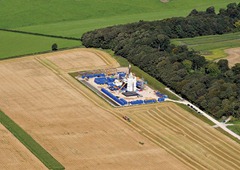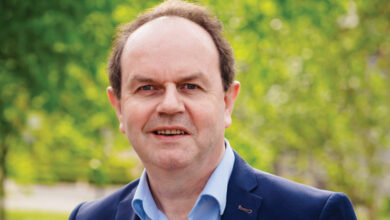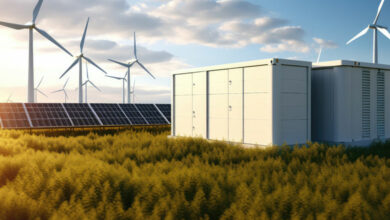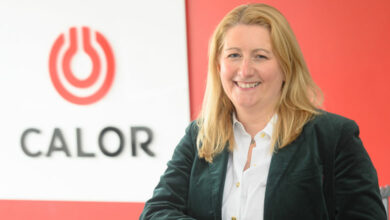Peter Styles: responsible fracking
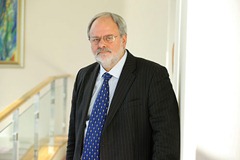 Within the right safeguards, hydraulic fracturing can improve energy’s security of supply and reduce methane emissions, geophysicist Peter Styles tells Peter Cheney. He also thinks that many fears about fracking can be allayed by looking at the scientific evidence.
Within the right safeguards, hydraulic fracturing can improve energy’s security of supply and reduce methane emissions, geophysicist Peter Styles tells Peter Cheney. He also thinks that many fears about fracking can be allayed by looking at the scientific evidence.
High carbon emissions, earthquakes and fires are three of the common objections raised by opponents of fracking but a geophysicist with 35 years’ experience says that each of those problems can be dealt with if the process is managed carefully.
Peter Styles is the Professor of Applied and Environmental Geophysics at the University of Keele. He co-authored the April 2012 report on seismicity induced by hydraulic fracturing in Britain, commissioned by the UK Department of Energy and Climate Change (DECC). The department’s final policy will have a strong influence on the Department of Enterprise, Trade and Investment’s approach in Northern Ireland.
Where hydraulic fracturing is carried out properly, Styles explains, it can improve security of supply and help to reduce greenhouse gas emissions. It may also stabilise prices.
“If we bring our gas from the Stockman field in Siberia, then we potentially bring it 5,000km through leaky pipelines,” he continues. “As those pipelines leak, they leak methane. Now, methane over a 20-year timescale is more than 70 times worse than CO2.” He therefore calculates that transporting that gas by pipeline carries a larger carbon footprint than consuming it at the end of the pipeline.
Most European shales of current interest were deposited in the Carboniferous period. Canadian exploration company Tamboran estimates that the Carboniferous shales in counties Fermanagh and Leitrim contain 2.6 to 5.2 trillion cubic feet of recoverable gas; UK annual gas demand is equivalent to 5 trillion cubic feet.
Seismicity
Sceptics frequently cite the risk of tremors, as the process opens up underground fractures in the rock. The level of induced seismicity depends on how much water is introduced, how fast it flows and the orientation of the stresses in the rock.
Out of over 100,000 fracks carried out in the USA, though, very few have resulted in felt seismicity. Only two examples of fracking-related seismicity have been categorically proven: the magnitude 2.3 tremor in Blackpool (caused by Cuadrilla’s Preese Hall well) and a magnitude 3.0 tremor in the Horn River basin in British Columbia, Canada.
“These are not large earthquakes, even by UK standards, but they’re undesirable,” Styles says. “We don’t want people to have seismicity which can be felt but we believe that by looking at the smaller seismicity beforehand, you can guard against these.”
As the Richter scale is logarithmic, 0.5 is 1,000 times less severe than earthquakes which are felt. Major earthquakes in the UK (up to magnitude 6) occur in much deeper and stronger rock formations, around 15km below the surface.
A ‘red-yellow-green’ warning system proposed in the report has been accepted by Cuadrilla and was adopted in DECC’s final policy statement.
Under this system, the operator would suspend operations and immediately ‘flow back’ if the magnitude of a single confirmed event is 0.5 or above. The operation should be abandoned if the magnitude reaches 1.5. The fluid, in any case, should not be allowed to sit in the fracture for long periods of time, as it may propagate further than planned and this may be the process which has stimulated the recent fault movement and small earthquakes observed in Blackpool.
Gasland, a 2010 documentary on fracking in the USA, achieved fame among environmentalists by featuring a man in Pennsylvania setting his tap water on fire as it contained gas. The film was directed by Josh Fox, a strong critic of the practice.
The claim, though, is misleading. Styles explains: “In that area, many people actually have a gas separator on their water supply because it’s quite known that gas comes out of the taps, and it came out of the taps before hydro-fracking started. It could be coming out of natural faults from coal deposits at shallow depths or it could just be generated in the near surface from marsh gas.”
Fracking in the USA is allowed at a much shallower level than is permitted in the UK, where a minimum separation between fracking and the overlying aquifers of 2,000 feet is viewed as best practice. A cement casing is used to separate the well from potential underground water sources.
In most cases, he adds, the debate over fracking “hasn’t had a great deal of scientific basis”. Styles continues: “It’s quite easy to generate a lot of heat and light about fracturing without understanding what actually is going on, and I think that’s what’s happened.” He acknowledges that people are concerned about hydrocarbons, especially after the Gulf of Mexico oil spill, “but all you can do is produce the scientific arguments [and] show them what they are.”
Styles characterises the debate as a triangle. Fracking can be done economically and technically but the third and final ‘angle’ is whether the technology will be allowed to be rolled out.
While renewables are popular, they may not necessarily reduce carbon emissions. “Wind is a big part of Ireland’s energy but, in actual fact, it’s not even quite as simple as that,” he remarks. “If you have a gas-fired power station, they operate most efficiently at about 60 per cent capacity. If you then input wind power, you then have to back off the gas-fired power station down to about 30 per cent. You generate almost twice as much CO2 at 30 per cent capacity as you do at 60 [per cent].”
Styles cautions: “There is a very laudable and sensible intention to have renewables but it shouldn’t be viewed as a religious faith. The objective is to reduce carbon and if by prejudicing the operation of your gas stations (which are needed to produce base-load) you release more CO2, that’s not particularly helpful. You have to look at these things on a very, very wide perspective to understand what the total implications are.”
Addressing the Northern Ireland Energy Forum, he explained that around 200 fracturing operations have been conducted in the UK since it first took place in 1988. Sand is used as a ‘propping agent’ to keep the fractures open and he thinks that it is unlikely that other additives (to reduce the liquid’s viscosity) will be permitted to be used in the UK and Ireland.
“If we stop now, we’ll never know any more about hydro-fracturing and shale gas than we do now, which is not enough,” he added. “We should proceed but we should proceed with a great deal of care.”

